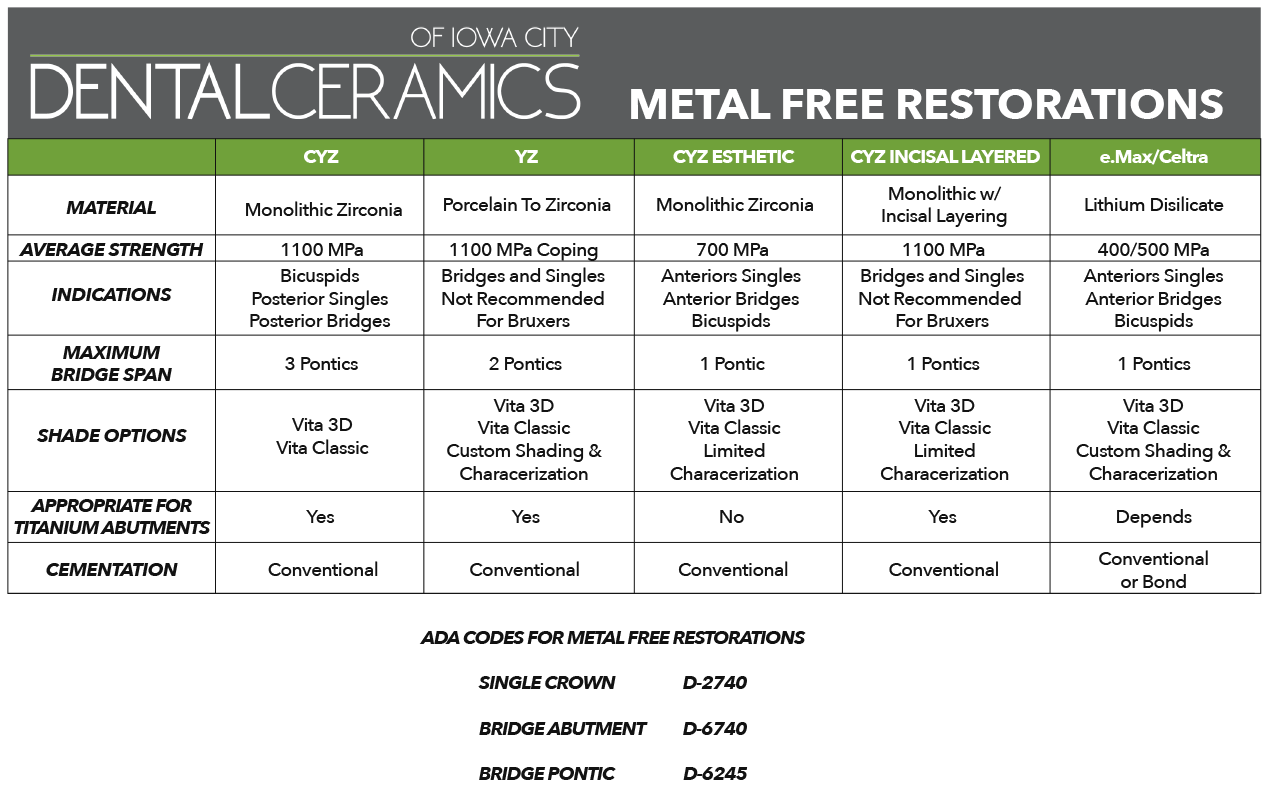
FULL CONTOUR ZIRCONIA
Dental Ceramics of Iowa City’s very own Full-Contour Zirconia is a high performance option. It’s awesome strength makes it a perfect restoration for any posterior indication. See our metal free guide below for more zirconia restorative choices.
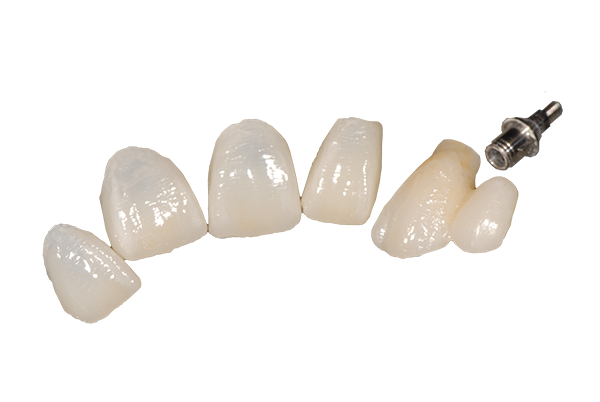
CELTRA®
With its exclusive microstructure, Celtra Press delivers confidence with flexural strengths greater than 500 MPA. Combining this strength, with a unique chameleon effect, Celtra Press blends in with existing dentition. Easy to adjust and polish chairside. Celtra is similar to e.Max with a little more strength.
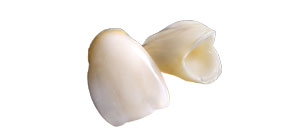
LAYERED ZIRCONIA
Dental Ceramics of Iowa City’s very own Layered Zirconia is virtually undetectable among natural dentition. We layer the zirconia crown with high-quality porcelain to mimic the vitality that is necessary for anterior restorations.
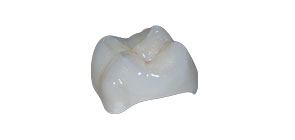
IPS E.MAX®
IPS e.Max is an exceptional metal-free alternative. Pressed for the best marginal integrity, the all ceramic crowns achieve stunning esthetics and vitality without sacrificing strength. Even with its impressive flexural strength of 400 MPA, IPS e.Max remains kind to opposing dentition.
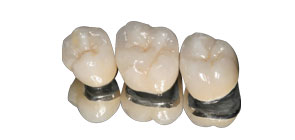
PORCELAIN FUSED TO METAL (PFM)
The original cosmetic restorations, our PFMs combine the sure foundation of biocompatible metals with the esthetic veneer of porcelain. We fabricate copings with high-noble, noble, and base metals*.
*Base metals contain nickel and many patients have nickel allergies.
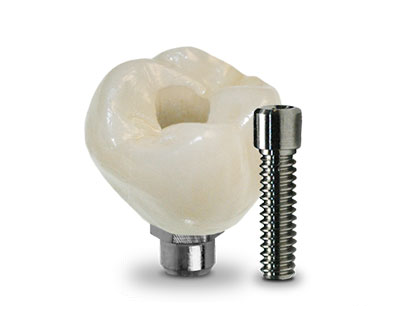
SCREW RETAINED CROWN
The two most popular screw retained crowns are ti-base or UCLA . Ti-Base are a customized stock abutment that have an all ceramic crown designed and milled to fit. It is bonded together in the lab. Typically the crowns are all zirconia however, eMax or Celtra are also options depending on occlusion. UCLA-is a gold coping that we wax to, cast and then apply porcelain. Both are great options and should be selected case by case.
IMPLANTS
Custom implant abutments versus stock abutments: Titanium or Zirconia. Stock implant abutments are manufactured to standard sizes and can be used on both tissue-level and bone-level implants. They are designed to be user-friendly, to make impressions with ease, are the most economical and are typically used for cement-retained restorations. They can be both straight and angled. They are best used for tissue-level implants that are not in the esthetic zone. The downside of stock implant abutments is that the tissue will conform to the shape of the implant abutment; if used in the esthetic zone, it is very difficult to achieve optimal emergence contours and to have the tissue support be optimal relative to adjacent teeth. The other challenge is that the final margin placement of the crown cannot be precisely controlled. On the other hand, Custom implant abutments, provide much better tissue management and esthetics and, if managed correctly, work well for cemented crowns. Custom implant abutments are milled to a precise position relative to the crest of the tissue; they can be used for either bone-level or tissue-level. There are many options for custom abutments; some are universal based upon a coping that is cemented, others are milled from a titanium or zirconia blank, and some are simple tubes upon which a wax-up is performed.



